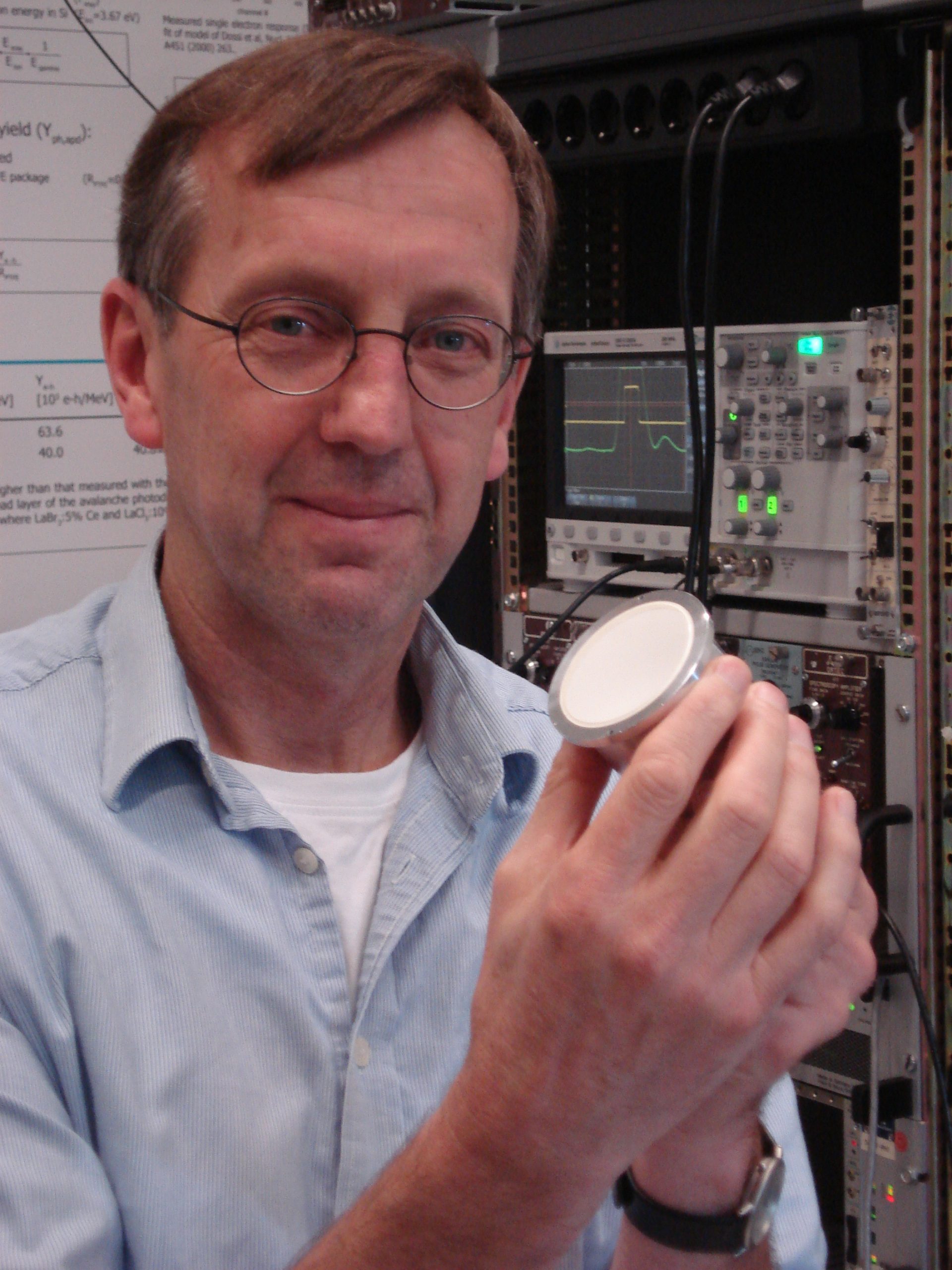Radioactive materials in airports and scrap yards have become easier to detect with a new gamma detector material that Professor Dorenbos and colleagues have developed.
Gamma or X-rays have enormous energy and penetration power, but they’re invisible to human eyes. This radiation can be analysed by detectors that convert the energy of a gamma photon into a cascade of light photons through a process called scintillation. Scintillation is the controlled recombination of a multitude of excited electrons and holes in such a way that visible light is emitted, and measured.
Crystals of lanthanum bromide as developed by Dorenbos’ group (now part of the section fundamental aspects of materials and energy at Applied Sciences faculty) in 2001 are very effective in the scintillation process. In other words, a single gamma quantum (energy around 1 MeV) caught in a LaBr3 salt crystal activated with cerium results in a short and bright flash of light. The brightness is a measure for the gamma ray energy, the short burst allows for precise timing of the gamma capture.
Gamma ray detectors are in medical use for gamma cameras and PET scanners. Security scanners for gamma rays in ports, airports, scrap yards and nuclear facilities are on the lookout for hidden or dumped radioactive materials. Such scanners need to be large and dense to capture the maximum amount of stray gamma radiation within a few seconds scanning time. To make things even more complicated, the scanners will also detect gamma radiation originating from innocent sources as cement walls or a truck load of bananas (emitting Potassium-40).
“You’ve got only a few seconds to pick out a suspect nuclide’s profile above the surrounding noise,” says Dorenbos about the high-tech scanners that are used to sniff out dirty bombs and smuggled nuclear materials.
Fast profiling of gamma ray sources requires detectors that can measure the energy of gamma rays with maximum resolution. Dorenbos explains this means two things: maximal response in terms of number of light photons per gamma quantum (typically 100,000) plus a scintillation response proportional with energy at lower energies. Alas, nearly all scintillation materials become less responsive at lower energies because not all ionised electrons will emit light when they fall back and recombine with a hole, especially at the low energy end of the spectrum. This results in a larger uncertainty in deriving the gamma ray energy from the light intensity.
Dorenbos’ group has developed a new detector material whose response over low energies essentially remains proportional, resulting in a record gamma energy resolution. Based on informed intuition, the team co-doped the lanthanum bromide crystal with minute quantities (100 parts per million) of strontium, and thus flattened the scintillation response at the lower end.
The group will continue their cooperation with glass and detector materials manufacturer Saint-Gobain to valorise their findings and to make better gamma detectors readily available. The research was funded by STW and continues with funding from the High Tech Systems and Materials Topsector program.
M.S. Alekhin, I.V. Khodyuk, P. Dorenbos et. al., Improvement of gamma-ray energy resolution of LaBr3:Ce3+ scintillation detectors by Sr2+ and Ca 2+ co-doping, Applied Physics Letters 102, 161915 (2013)



Comments are closed.